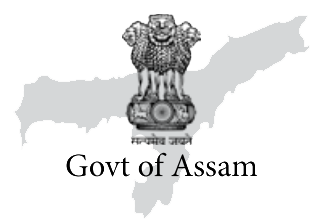Nuria Begum (21 years) is from Bar Dampur Ali Kash village under Hajo revenue block in Kamrup district of Assam. She was blessed with a son on the morning of July 22 at the Sualkuchi Community Health Centre (CHC) after a team of doctors successfully carried out a caesarean operation.
“I admitted my pregnant wife to this hospital on July 21 after she experienced severe pain. Early this morning, a team of doctors and nurses carried out an emergency caesarean operation on her. We were blessed with a son. Both the baby and the mother are doing fine and getting due care from the medical staff. Everything was free here,” Nekibur Rahman Saikia (28), an employee of a private company, narrated this to Asom Barta.
Like Nuria, many pregnant women were also waiting to have their medical care at the Gynaecology section of the Sualkuchi CHC. The OPD section in the hospital also takes care of hundreds of patients. In fact, the veranda waiting room of the OPD section was full of patients and their attendants when this newsletter visited the hospital.
Dr Dipak Das, Sub Divisional Medical and Health Officer of Sualkuchi CHC said that on an average 700 patients visit the CHC.
“We get patients in significant numbers from Sulakuchi and outside because of our impressive health care standards,” Dr. Das told this reporter.
Hazira Begum (23) of Pub Sechamukh village under Hajo revenue circle was admitted in the Gynaecology Department of the CHC despite a PHC near her village. “Here, they have better healthcare facilities than the hospital in our area,” said Begum, who was blessed with a boy three-days ago through a C-section.
When this reporter was doing the rounds of the hospital, Sanjib Bharali, an electrician by profession and resident of 1 No. Bapuji Path in Sualkuchi, brought one of his colleagues, who a few minutes back met with an accident and had bone fracture, to the emergency section. “The emergency section took all possible measures to provide immediate medical attention to my colleague,” said Bharali after an X-ray was conducted on the patient’s leg.
The CHC is the only public healthcare institute in greater Sualkuchi, which has a population of around one lakh.
It has achieved the feat of being the best CHC in the State based on the recently held Swasthya Sewa Utsav, conducted by NHM, Assam.
Deputy Superintendent Dr Kartik Medhi said that the working theme for the staff of Sualkuchi CHC is ‘Quality is Everyone’s Responsibility’. “All employees of the hospital are accountable for his or her respective responsibility. Our working mechanism is based on accessible, appropriate, available, affordable, effective, efficient, integrated, safe, and patient-related health care. This paves the way for quality which showed in the recent exercise conducted by NHM,” said Dr Medhi.
Mukalmua in Nalbari district is 60-km North-West of Guwahati. Huge number of patients and their attendants is a given thing in the Mukalmua Subdivision Civil Hospital.

“The greater Mukalmua area is densely populated. We are experiencing an increase in the number of patients, of late. This is due to people’s trust in the Government health care mechanism,” said Dr Pradip Chandra Das, SDMO (Sub Divisional Medical Officer).
Moni Begum (60) of Mukalmua is having problems in her vision since the last few days. She is currently under the care of an ophthalmologist of this hospital. “Government hospitals are the only option for us. I am very happy because of the way my doctor has taken care of me,” she told this reporter.
Binoy Aminga has admitted his pregnant wife Renuka here. “We were in touch with doctors for well over six months. We are expecting good news anytime now. A beaming, to-be-father, Binoy said.
The SDMO said that NHM activities are one of the key factors for improvement in the Government health care system, which is evident in every sphere. “I have been in Government health care service for over 22-years. The improvement I have seen in the last decade or so is fantastic,” said Dr Das.
Echoing his colleague, Dr Ratul Das, a gynaecologist, said that the capacity of the healthcare ecosystem to provide last-mile healthcare delivery in the rural areas has increased significantly in recent years.













